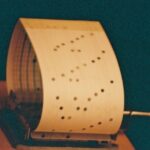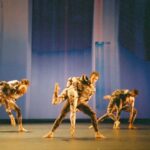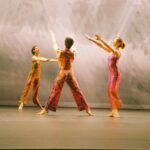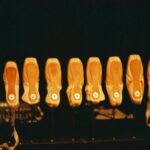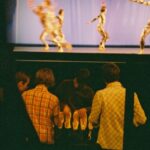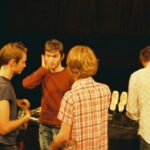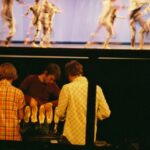brooklyn academy of music
Brooklyn, NY, United States
Oct 14, 2003
Setlist
Ba BaTi Ki
Di do
one new york newspaper, as though unsure as to exactly what would take place, sent three of its staff to the brooklyn academy of music for the ‘split sides’ premiere: theatre, dance, and music critics were all on hand to cover the event. no one knew quite what to expect from this performance – which is just how merce cunningham likes it, having choreographed inherently chancy, free-form dance for 50 years now.
merce cunningham’s dancers are used to obscure, or surprising, or inappropriate music accompanying their performances. in fact, it is fair to say that they can dance to anything. which makes something of a dilemma for our esteemed bands, in that any great influence on the substance of the choreography is out of the question. so why make an effort at all? this is not to say that no influence is possible: rhythmical cues tweak the dancers’ movements here and there. the thought of waves of sound buffeting the cunningham boat fits more closely the reality of the performance than that of a musical flick of the hand chaotically influencing the choreographical roll of the dice.
so, with the choreography sailing on regardless, it could be said that the interaction of dance and music leans more toward influencing the music than the dance. again, it is a matter of synchronisation, of pace, of rhythm; but rhythm is perhaps even more to music than it is to dance (are we not more sensitive to rhythm in an aural, as opposed to visual, context?). thus it is in the subversion of the music by the dance that the greater interest lies.
radiohead’s laptops and sequencers weren’t watching the action on stage. their human masters were watching, and engaged in a little local tinkering with the sound (what the new york times referred to as “cheating”), mainly through manipulation of filters and the vocal samples. but there’s a limit to how far sequenced sections of beats can be tailored to fit the sequenced sections of movement on stage. so radiohead’s music and the corresponding section ‘a’ of the choreography remained fairly independent. this is the norm for a cunningham piece, and arguably what the choreographer, or at least the critics, would want.
however, the split sides project offered the tantalising possibility of interaction – not in the sense of a mere superposition of music and dance (and décor and costume and so on), an interaction only inside the head of the observer; but an interaction between dancers and musicians, so that the final state is an inseperable entanglement of sound and movement. and this, just maybe, was what came out of the second of the two split sides of the work. we had some clear tinkering to suit the moment in the form of sigur rós’ clickety-clack accompaniment to a series of stretches by a trio of dancers (also “cheating”, though this time “charmingly” so, which elicited laughs of delight from the audience).
but there was also, near the end of the piece, a coordination of dance and music over a time scale longer than mere moments: rumbling noise and vocal aahs from sigur rós as female dancers wrapped themselves around men, developing into a real crescendo as the dancers swayed and leaned and an intense rhythm emerged from the noise… culminating in an ecstatic shiver down the spine. it wasn’t just me: others, amongst the throng in the lobby after the show, spoke of it too. it is of course impossible to prove that this was indeed real interaction, a conscious build-up in sympathy with the dance. perhaps it was nothing more than cunningham’s perennial luck. and it is entirely speculative that the dancers made the interaction two-way by responding, in turn, to the music. but it is exactly this sort of dynamic that draws many to sigur rós’ music; and the enraptured faces of the band as they simultaneously watched and played convinced me, at least, that this was true interaction on their part – and in achieving that, something of which to be proud.
– chris wray
